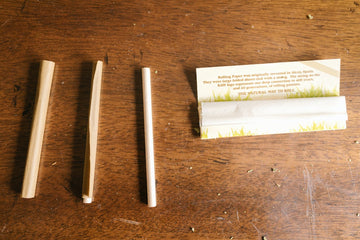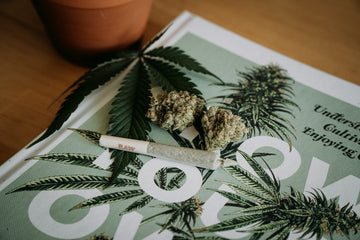The Art of Cannabis Consumption: Rituals and Traditions Around the World
Cannabis consumption has a rich history dating back thousands of years, with various cultures around the world incorporating the plant into their rituals, traditions, and ceremonies. From ancient religious practices to modern-day social gatherings, cannabis has played a significant role in human culture, spirituality, and social bonding. In this article, we'll explore the diverse rituals and traditions associated with cannabis consumption, highlighting the artistry, symbolism, and cultural significance of these practices across different societies and time periods.
Ancient Rituals and Religious Practices: The use of cannabis in religious rituals and ceremonies dates back millennia, with evidence of its consumption found in ancient civilizations across Asia, Africa, and the Americas. In ancient India, cannabis, known as "bhang," was revered as a sacred plant associated with the god Shiva and used in Hindu religious ceremonies to induce states of transcendence and divine communion. The practice of consuming bhang during festivals such as Holi and Mahashivratri continues to this day, symbolizing spiritual awakening and the dissolution of ego boundaries.
Similarly, in ancient China, cannabis was valued for its medicinal and spiritual properties, believed to facilitate communication with the spirit world and enhance meditation practices. Taoist alchemists incorporated cannabis into their rituals as a means of achieving immortality and spiritual enlightenment, using it to unlock the hidden realms of the mind and attain higher states of consciousness.
In the Middle East, cannabis played a central role in the religious and mystical traditions of Sufi Islam, where it was used to induce trance states and facilitate ecstatic experiences during rituals and ceremonies. The consumption of cannabis resin, known as hashish, was believed to dissolve the ego and unite the individual with the divine, leading to profound spiritual insights and experiences of oneness.
Cannabis and Indigenous Cultures: Indigenous cultures around the world have also incorporated cannabis into their rituals and traditions, often as a means of healing, spiritual exploration, and social bonding. In pre-Columbian America, indigenous tribes such as the Aztecs, Mayans, and Incas revered cannabis as a sacred plant with spiritual significance. Ritualistic consumption of cannabis was common during religious ceremonies and shamanic practices, where it was believed to facilitate communication with the gods and ancestors and provide insights into the nature of existence.
In Africa, various indigenous tribes have long used cannabis in their spiritual and healing practices, incorporating it into rituals to invoke ancestral spirits, induce visions, and promote social cohesion. Among the Bwiti tradition of Central Africa, for example, cannabis is used in conjunction with other psychoactive plants as part of initiation ceremonies, where participants undergo spiritual journeys to connect with their ancestors and receive guidance and wisdom.
Cannabis and Contemporary Practices: In modern times, cannabis consumption has taken on new forms and meanings, with rituals and traditions evolving to reflect changing cultural attitudes and social dynamics. From smoking circles and cannabis ceremonies to infused culinary experiences and wellness rituals, cannabis has become a focal point for social bonding, self-exploration, and community building in many parts of the world.
Smoking circles, where friends gather to share a joint or pass around a vape pen, have become a common ritual among cannabis enthusiasts, providing an opportunity for socializing, storytelling, and relaxation. These informal gatherings often follow established protocols, such as passing the joint to the left-hand side or observing a moment of silence before lighting up, creating a sense of camaraderie and shared experience among participants.
Cannabis-infused culinary experiences have also gained popularity in recent years, with chefs and home cooks alike experimenting with cannabis-infused dishes and beverages. From gourmet edibles and cannabis-infused cocktails to CBD-infused desserts and wellness elixirs, these culinary creations offer a new way to experience the therapeutic and sensory pleasures of cannabis while enjoying delicious food and drinks with friends and loved ones.
In addition to social rituals, cannabis consumption has also become integrated into wellness practices such as yoga, meditation, and mindfulness. Ganja yoga classes, for example, combine cannabis consumption with yoga and meditation to enhance relaxation, focus, and body awareness, providing participants with a holistic and immersive experience that nourishes the mind, body, and spirit.
The art of cannabis consumption encompasses a rich tapestry of rituals and traditions that span cultures, continents, and time periods. From ancient religious practices to modern-day social gatherings, cannabis has played a central role in human culture, spirituality, and social bonding, offering a gateway to higher states of consciousness, creativity, and community. As attitudes toward cannabis continue to evolve and legalization efforts gain momentum, we can expect to see a resurgence of interest in the artistry, symbolism, and cultural significance of cannabis consumption, as people around the world rediscover the ancient wisdom and healing power of this remarkable plant.




















